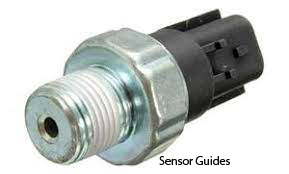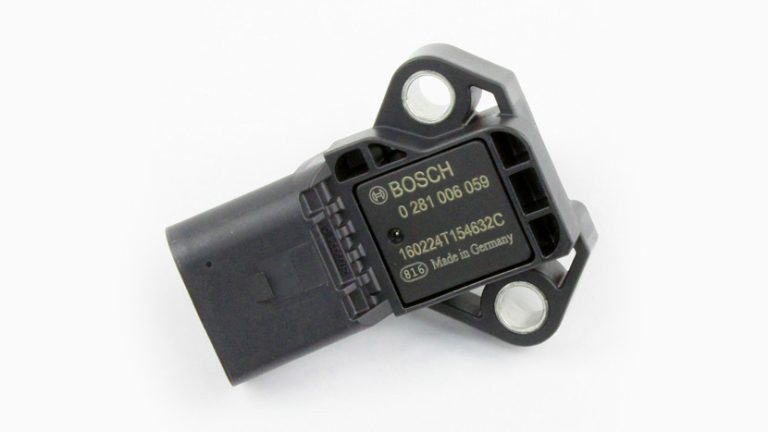Fuel Rail Sensor In 6.7 Cummins Problems, Symptoms, and Troubleshooting
As a seasoned mechanic with years of experience working on various engines, I’ve encountered my fair share of issues with the fuel rail pressure sensor in 6.7 Cummins engines.
In this article, I’ll delve into the critical role of this sensor, common symptoms of problems, and step-by-step troubleshooting procedures. Whether you’re a fellow mechanic or a Cummins owner facing engine performance issues, this guide will provide valuable insights into diagnosing and resolving fuel rail pressure sensor-related problems. Let’s roll up our sleeves and get into the nitty-gritty of Cummins engine troubleshooting.
Table of Contents
What does the fuel rail sensor do in 6.7 Cummins?

The fuel rail pressure sensor in a 6.7L Cummins engine is crucial in monitoring the fuel pressure within the fuel rail. The fuel rail is a component that distributes fuel to the engine’s fuel injectors. The primary functions of the fuel rail pressure sensor are as follows:
01. Fuel Pressure Monitoring
The sensor constantly measures the pressure of the fuel in the fuel rail. This information is critical for the engine’s management system to ensure that the engine is receiving the correct amount of fuel under various operating conditions.
02. Optimizing Fuel Delivery
Based on the real-time data from the fuel rail pressure sensor, the engine’s electronic control unit (ECU) can adjust the fuel injection timing and quantity. This adjustment is necessary to optimize engine performance, fuel efficiency, and emissions.
03. Diagnosing Issues
The fuel rail pressure sensor can detect any abnormalities in the fuel pressure, such as a drop in pressure or a sudden increase. When a problem is detected, it can trigger the vehicle’s onboard diagnostics system, which may illuminate the check engine light and store error codes for further diagnosis.
In summary, the fuel rail pressure sensor is critical in ensuring that the engine receives the correct amount of fuel and operates efficiently. It helps maintain the right air-fuel mixture for combustion, essential for engine performance and emissions control. If this sensor fails or malfunctions, it can lead to various engine performance issues and should be addressed promptly.
What are common 6.7 cummins fuel rail pressure sensor problems?

The common 6.7 Cummins fuel rail pressure sensor problems are:
01. Sensor failure
This can happen due to wear and tear, dirt and debris, or electrical problems. The sensor may stop sending a signal to the engine computer or send an inaccurate signal. This can cause the engine to run too rich or too lean, leading to performance, fuel economy, and emissions problems.
02. Wiring problems
The wiring harness that connects the fuel rail pressure sensor to the engine computer can become damaged or corroded. This can cause the sensor to malfunction or fail completely.
03. Fuel contamination
If the fuel is contaminated with dirt, water, or other debris, it can damage the fuel rail pressure sensor. This can cause the sensor to fail or to give inaccurate readings.
What are 6.7 cummins fuel rail pressure sensor symptoms?
The fuel rail pressure sensor in a 6.7L Cummins engine plays a crucial role in ensuring the proper fuel pressure for engine performance. When this sensor malfunctions or fails, it can result in various symptoms and issues. Here are five common symptoms of a faulty fuel rail pressure sensor:
01. Hard Starting
One of the most noticeable symptoms of a failing fuel rail pressure sensor is difficulty starting the engine. If the sensor provides incorrect pressure readings to the engine control unit (ECU), the engine may not receive the correct amount of fuel for starting. This can lead to extended cranking times before the engine fires up.
02. Loss of Power and Performance
A malfunctioning fuel rail pressure sensor can cause a decrease in engine power and performance. If the sensor inaccurately reports low fuel pressure to the ECU, the engine may receive insufficient fuel, resulting in reduced acceleration and overall power output.
03. Black Smoke from the Exhaust
Another noticeable symptom is the emission of black smoke from the exhaust pipe. When the fuel rail pressure sensor fails, it can cause the engine to run rich, meaning it burns an excessive amount of fuel. This rich fuel mixture can lead to the production of black exhaust smoke.
04. Check Engine Light (CEL) Illumination
When the fuel rail pressure sensor detects a problem, it will often trigger the vehicle’s onboard diagnostics system. This, in turn, leads to the illumination of the check engine light (CEL) on the dashboard. The CEL serves as an indicator that a fault or issue has been detected and needs attention.
05. Hesitation or Stalling
A malfunctioning fuel rail pressure sensor can result in engine hesitation or even stalling during acceleration. Inaccurate fuel pressure readings may cause the engine to receive intermittent or insufficient fuel, leading to momentary loss of power and hesitation, or in extreme cases, engine stalling.
It’s important to note that these symptoms can also overlap with issues related to other engine components or systems. Therefore, if you experience any of these symptoms, it’s advisable to have a qualified mechanic perform a diagnostic check to determine the exact cause, including whether the fuel rail pressure sensor is indeed the culprit.
Timely diagnosis and repair can help prevent further engine problems and maintain optimal performance.
How to test the 6.7 Cummins fuel rail pressure sensor?

Testing the fuel rail pressure sensor in a 6.7L Cummins engine involves a few steps to ensure it’s functioning correctly. Here’s a general procedure for testing the sensor:
Tools and Materials Needed
- OBD-II scanner or diagnostic tool
- Multimeter (for electrical testing)
Procedure
1. Using a diagnostic tool
The most accurate way to test the fuel rail pressure sensor is to use a diagnostic tool. A diagnostic tool can be used to read the signal from the sensor and compare it to the expected values. If the signal from the sensor is not within the expected range, then the sensor is faulty and needs to be replaced.
2. Using a multimeter
If you do not have a diagnostic tool, you can use a multimeter to test the fuel rail pressure sensor. However, this method is not as accurate as using a diagnostic tool.
To test the fuel rail pressure sensor using a multimeter, follow these steps:
- Disconnect the electrical connector from the sensor.
- Set the multimeter to the DC voltage setting.
- Connect the positive lead of the multimeter to the signal terminal on the sensor.
- Connect the negative lead of the multimeter to the ground.
- Turn on the key to the ON position, but do not start the engine.
- The multimeter should read a voltage between 0.5 and 1.0 volts.
- If the voltage is outside of this range, then the sensor is faulty and needs to be replaced.
Safety precautions
When testing the fuel rail pressure sensor, it is important to take the following safety precautions:
- Wear safety glasses to protect your eyes from flying debris.
- Be careful not to touch any moving parts.
- Be careful not to touch the fuel rail, as it can be very hot.
Remember that the specific testing procedures and values can vary between vehicle models and manufacturers, so always consult your vehicle’s service manual for the most accurate testing instructions and specifications. If you’re uncomfortable with these tests, having a qualified mechanic or technician perform the diagnostics and replace the sensor if needed is best.
What is 6.7 cummins fuel rail pressure at idle and acceleration?
The fuel rail pressure in a 6.7L Cummins engine at idle is typically between 2500 and 3000 psi. Under acceleration, the fuel rail pressure can increase to 4000 psi or more.
The fuel pump and the fuel pressure regulator control the fuel rail pressure. The fuel pump supplies fuel to the fuel rail, and the fuel pressure regulator controls the pressure of the fuel in the fuel rail.
6.7 Cummins Sensor Locations, Symptoms and Replacement Procedure Explained
Sensor Guides
How to replace fuel rail pressure sensor 6.7 Cummins?
To replace the fuel rail pressure sensor in a 6.7L Cummins engine, follow these steps:
- Locate the fuel rail pressure sensor. It is located on the back of the fuel rail, near the driver’s side of the engine.
- Disconnect the electrical connector from the sensor.
- Use a wrench to remove the sensor from the fuel rail.
- Install the new sensor in the same location and tighten it with a wrench.
- Reconnect the electrical connector to the sensor.
- Clear the engine’s computer of any stored trouble codes.
- Check the fuel rail pressure to make sure that it is within the correct range.
Safety precautions
When replacing the fuel rail pressure sensor, it is important to take the following safety precautions:
- Wear safety glasses to protect your eyes from flying debris.
- Be careful not to touch any moving parts.
- Be careful not to touch the fuel rail, as it can be very hot.
- Be sure to use the correct torque to tighten the sensor. Overtightening the sensor can damage it.
6.7 Powerstroke Barometric Pressure Sensor Location
sensor guides
6.7 fuel rail pressure sensor leaking: What to do now?
If your 6.7 fuel rail pressure sensor is leaking, you should take the following steps:
- Identify the source of the leak. The leak may be coming from the sensor itself, or it may be coming from the fuel line that is connected to the sensor.
- If the leak is coming from the sensor, you will need to replace the sensor.
- If the leak is coming from the fuel line, you may be able to repair the leak by tightening the connection or by replacing the fuel line.
- Once you have repaired the leak, you should check the fuel rail pressure to make sure that it is within the correct range.
Here are some additional tips for dealing with a leaking 6.7 fuel rail pressure sensor:
- Be careful not to touch the leaking fuel, as it can be flammable and may cause skin irritation.
- If the fuel leaks onto the ground, you should clean it up immediately to prevent slipping and falling.
- If the fuel leaks into the engine compartment, you should have the engine cleaned by a qualified mechanic to prevent fires.
If you are uncomfortable repairing the fuel rail pressure sensor, you should take your vehicle to a qualified mechanic.
Here are some of the causes of a leaking 6.7 fuel rail pressure sensor:
- Wear and tear: The fuel rail pressure sensor is a moving part, and it can wear out over time.
- Dirt and debris: Dirt and debris can build up on the fuel rail pressure sensor and cause it to leak.
- Overtightening: Overtightening the fuel rail pressure sensor can damage it and cause it to leak.
- Damage to the fuel line: The fuel line that is connected to the fuel rail pressure sensor can be damaged by road debris, accidents, or other factors.
Here are some of the symptoms of a leaking 6.7 fuel rail pressure sensor:
- Fuel smell in the engine compartment: If you smell fuel in the engine compartment, it may be a sign that the fuel rail pressure sensor is leaking.
- Fuel under the vehicle: If you see fuel under the vehicle, it may be a sign that the fuel rail pressure sensor is leaking.
- Check engine light: The light may come on if the fuel rail pressure sensor leaks.
- Hard starting: If the fuel rail pressure sensor is leaking, it may cause the vehicle to be difficult to start.
- Loss of power: If the fuel rail pressure sensor is leaking, it may cause the vehicle to lose power.
If you are experiencing any of these symptoms, having the fuel rail pressure sensor checked by a qualified mechanic as soon as possible is important.
6.7 Cummins Water in Fuel Sensor Bypass: Exploring Techniques and Considerations
sensor guides





